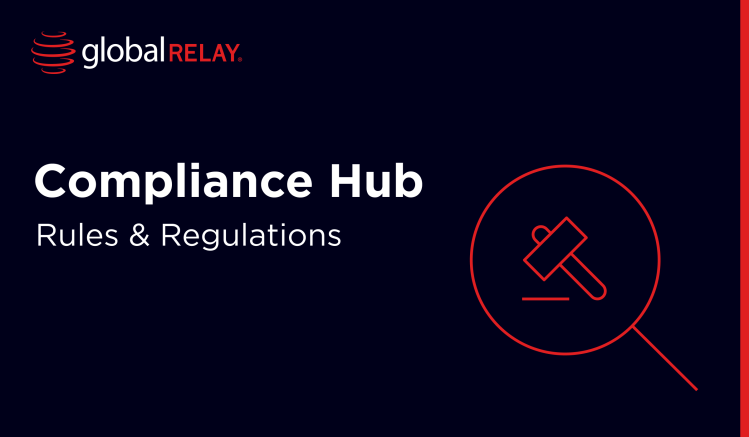Written by a human
Here to help keep investors – and their investments – safe, rule 2210 helps to guide communications between regulated broker-dealers and the public. It’s important to get familiar with the FINRA rules and know your boundaries in order to move forward confidently and advertise your services.
Overview of FINRA rule 2210
The general premise of the rule is to promote fair and balanced communications, and that all claims are backed-up by sound factual evidence. FINRA’s 2210 rule guides broker-dealer communications with the public in the US to three groups of investors:
| Investor Type | Definition |
| Retail | Written or electronic communication distributed to more than 25 retail investors in a 30 day period |
| Correspondence | Written or electronic communication distributed to less than 25 retail investors in a 30 day period |
| Institutional Communication | Written or electronic communication distributed to only institutional investors (except for internal communications) |
Retail communication requirements
The majority of FINRA 2110 requirements apply to communications with retail investors:
- An appropriately qualified (registered) person must oversee and approve each communication before it is used: this applies to the likes of advertisements, investor information and general communications
- The qualified individual might be qualified to approve the likes of retail communications and debt and equity research reports, but not comms that require separate registration or where they don’t have technical expertise
Exceptions
If the broker-dealer communications do not involve certain product recommendations or service promotions, they may be considered exempt.
Another exception happens if a non-approved member previously filed communications with the department of advertising and received approval. In this case, as long as they are used consistently to the situation it was approved for, firms should be fine to use them.
Filing and record-keeping
The rule states that communications must be filed with the regulator at least 10 days before their intended use.
In terms of record-keeping, firms must retain all communications for at least 3 years as required by the SEC’s 1934 Act. Record-keeping failures have been the focus of some of FINRA’s recent enforcements, so this section is an important one.
2023 proposal to amend the rule
In November 2023, FINRA submitted a proposed amendment to the SEC with regards to rule 2110.
Previously, broker-dealers were not allowed to include general projected performance in their written communications, both to retail or institutional investors.
However, the proposed amendment includes a limited exception to this rule. It will allow for performance projections or targeted returns information included in written communications, only for institutional investors or qualified purchasers.
| Investor type | Definition |
| Institutional Investors | Banks, insurance companies, government agencies, employee benefits plans, registered advisers and other persons with more than $50 million in assets |
| Qualified Purchasers | Individuals, family-owned companies and family trusts with more than $5 million in investments |
The reason that these groups have been chosen to receive projected information is based on the assumption that they are more informed investors (aka ‘knowledgeable employees’).
As such, the exception comes with several conditions:
- The written communications must be designed to be relevant to the likely financial situation of those receiving them
- There must be a reasonable basis and records for which the assumptions are being made to project performance
- A full disclosure must be made to accompany these communications, including a statement of no guarantee
- Investors must also receive information on the criteria used to calculate projected information, as well as the limitations or risks in replicating this financial scenario
Violations of FINRA 2210
Two examples of recent 2210 examples include:
- Influencer marketing gone wrong
- Sweeping violations for crypto firms
Influencer marketing gone wrong
In March 2024, a company called M1 finance was fined $850,000 by FINRA in violation of rule 2210. The firm used influencers to promote their products, who ended up making claims that were not fair and balanced, or contained exaggerated claims.
M1 failed to properly supervise these promotions, in which influencers gave misleading claims in order to get almost 40,000 new accounts opened, for which the influencers received a flat fee payment per new account.
Alongside violating rule 2210, the company were found to have violated FINRA’s 2010, 3110 and 4511 rules, which led to the large fine.
Sweeping violations for crypto firms
In January 2024, FINRA conducted a sweeping analysis of compliance to rule 2210 for cryptocurrency assets and product organisations. The regulator found violations in approximately 70% of communications.
Common violations included:
- Implying that cryptocurrency operated similarly to cash or fiat
- Comparisons of crypto products with stocks and other investments without proper disclosures (to prevent misleading the reader)
- Misleading statements about how protected crypto investments are under the Securities Investor Protection Act (SIPA)
How to approach communications in compliance
In general, FINRA recommends a five-step approach to complying with rule 2210:
- Flexible supervision
- Risk-based procedures
- Training
- Surveillance
- Follow-up to correct problems
But attempting to manually oversee and control all firm communications is simply impossible. Here at Global Relay, we provide comprehensive communications capturing services, enabling organisations to access and oversee all channels of communication.
With the ability to enforce legal holds and prevent the destruction of communications, you can meet regulatory requirements and intelligently identify risks. Improve the efficiency of your FINRA 2210 compliance by getting a demo of Global Relay today.

